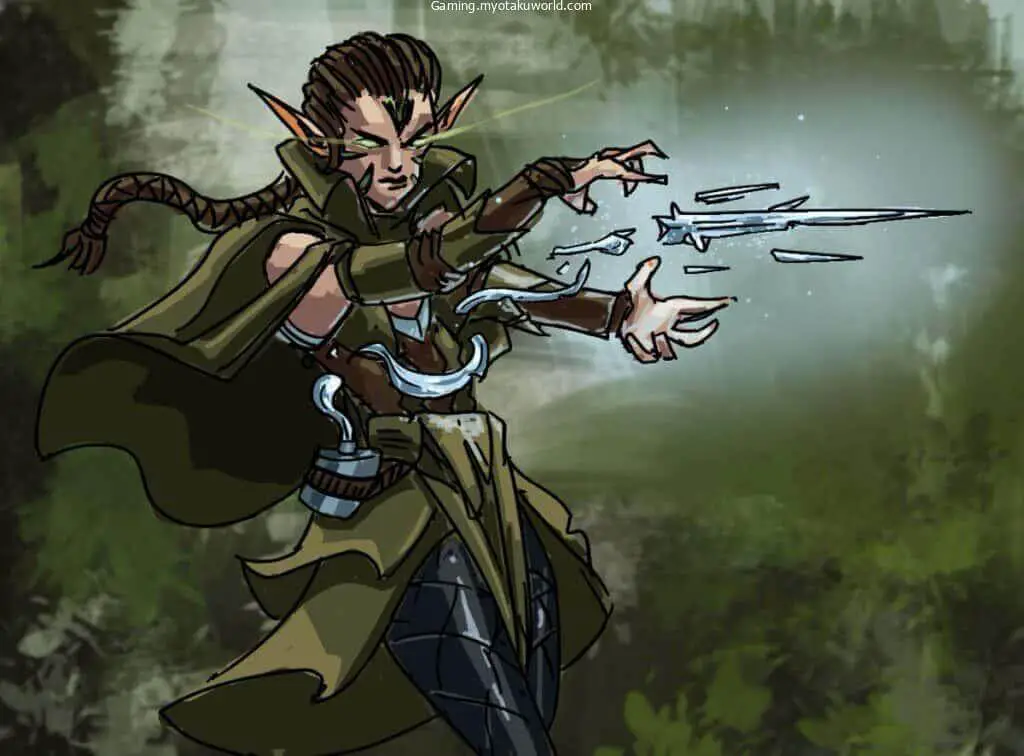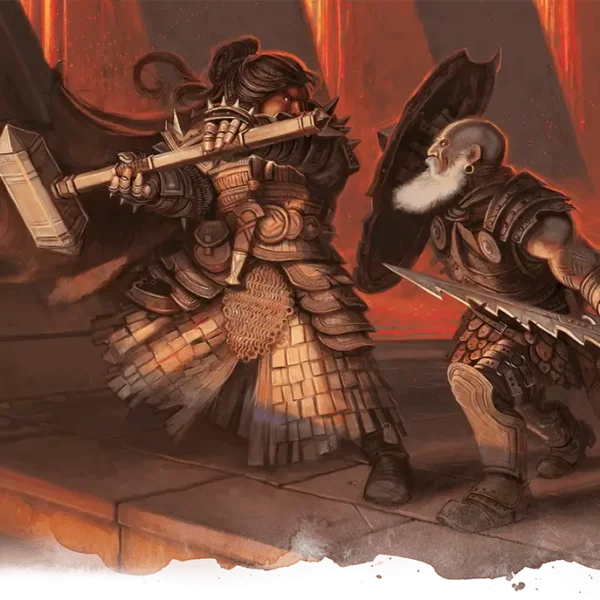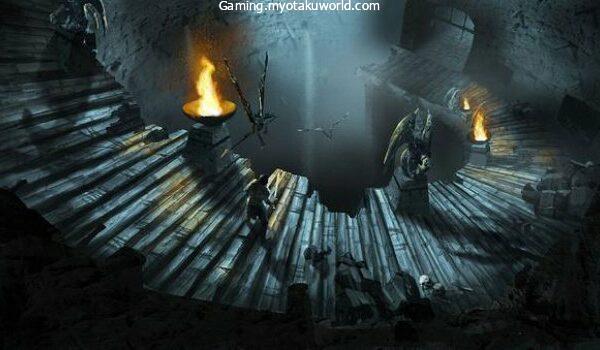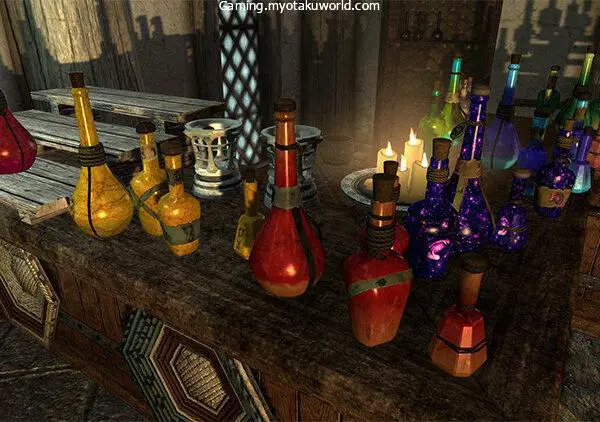There are plenty of weapons within the D&D universe. From bludgeons and blades to guns, there is much weaponry that your character could be equipped with.
Spellcasters, who are normally armed only with spells and bludgeons, have several additional spells that are categorized as weapons. Ice Knife is one of them.
It is a great spell to play with. The knife can be an exciting and interesting spell that is enjoyable to play because it comes with a variety of interesting applications.
It also creates additional spells you can play with if you’re looking to become a necromancer.
But how do you use Ice Knife? What makes it such a cool spell? How do you utilize it to fight? This is the Ice Knife 5e guide to this spell.
- What is The Ice Knife Spell?
- WHO CAN CAST ICE KNIFE IN 5E?
- WHAT ARE THE RULES FOR ICE KNIFE IN 5E?
- Why use Ice Knife?
- When should you use Ice Knife?
- What is needed to cast Ice Knife?
- Who can cast Ice Knife?
- What to do If Ice Knife Misses?
- Is Ice Knife worth It?
- ICE KNIFE 5E COMPARED TO BURNING HANDS
- FAQ About Ice Knife
What is The Ice Knife Spell?
This spell is part of its own in The Xanathar’s Guide to Everything book and here are the stat blocks that go with the spell:
- 1st level conjuration
- Time to Cast: 1 action
- 60 feet
- Spell Lists: Druid, Sorcerer, Wizard
- Components: M, S (a Drop of water ) or a chunk of ice)
- Duration: Instantaneous
You make a shard of ice. You then throw it at a creature in the range. Create a spell that is ranged at the person you want to target.
When it hits the target is hit with 1d10 of piercing damage. If it fails the shard explodes.
The person who is the target and all creatures located within 5 feet of the area where the ice broke must be successful on a dexterity saving throw or suffer two cold damages.
At Higher Levels. When casting this spell using a slot that is 2nd level or higher the cold damage increases by 1d6 per slot level that is higher than 1st.
Let’s break down this spell. It is a 1st level conjuration spell that requires just one move to create.
The spell is 60 feet in range and requires a physical component as well as a material. It takes just a few seconds to cast.
When you cast the spell, it creates an ice shard. You then throw it at the desired target. When a spell attack is ranged struck, the target suffers 1d10 damage from piercing, and the fragment explodes.
Each target within 5 and also the target in all, must make a dexterity save to avoid taking the cold damage of 2d6.
When you cast the spell again the damage to cold increases with each level that you cast it at. Additionally, it can be utilized by a Sorcerer, Wizard, and Druid.
Let’s now take an examination of this spell and its application within the realm of Faerun.
WHO CAN CAST ICE KNIFE IN 5E?
The following classes have Ice Knife on their spell list:
No subclasses get Ice Knife for free.
WHAT ARE THE RULES FOR ICE KNIFE IN 5E?
Ice Knife has the following rules in DnD 5e:
- If 1 square on a battle map is equal to 5 feet, the Ice Knife’s Dexterity save affects a total of 9 squares. The area of effect of Ice Knife can be thought of as having a 5-foot radius, with the initial target in the middle.
- Ice Knife can damage allies. The spell says that a Dexterity save must be made by “the target and each creature.” This goes for allies as well as the caster.
- Sorcerer’s Twinned Spell cannot be used to twin the Ice Knife. “It can affect more than one creature” is the reason.
- Ice Knife’s spell attack can be a critical strike, but it won’t affect the cold damage caused. If you roll a 20 on your ranged spell attack, the spell’s piercing damage is determined by rolling 2d10.
- But if that creature or any other creature in range fails its Dexterity saving throw, it still only takes 2d6 cold damage (or more, if upcast).
Why use Ice Knife?

Ice Knife is an extremely effective spell when used in the right situation. It’s not a cantrip, which means that it costs the use of a spell slot, which could be problematic for low-level characters.
Are you using your spell slot to attach an attacking goblin to the tree or make use of the spell slot to revive your warrior after that same goblin cut his HP pool with an Axe?
The primary reason you should use Ice Knife isn’t because of the 1d10 cold injury you cause to your target if you do, but the secondary effect of the spell.
Since this spell requires you to use an attack that is ranged at the target, it could be missed or be bounced off of the target’s AC. If it fails or hits the secondary effect of the spell activates and the fragment explodes.
This requires a saving roll against the target and all creatures within 5 feet of the target. If they fail to make the save, they are harmed by the explosion. 2d6 cold damage could be dealt much damage, and it’s not avoided.
When should you use Ice Knife?
The ideal time to utilize an ice cube isn’t to fight the more powerful enemies who threaten your group, but rather smaller enemies that are all gathered around your group.
As an example, let’s say you are fighting three goblins and they all get clumped together, shooting shots at your group.
You could hit the goblin in the middle with an ice blade, and when it strikes it, they will take 1d10 damage of piercing.
The knife will explode with damage that will be taken by the three. If they all are able to make their rolls this is pretty decent damage.
It may even kill the intended victim if they are not being able to save. The Ice Knife can also be a good option if you’re in the face of less powerful enemies, as the impact of the explosion can kill enemies who are wounded.
Additionally, the spell can be used in hallways where enemies tend to be congregated and can be able to take the damage from splashes.
What is needed to cast Ice Knife?
The first step is to create a somatic action, which is it’s a hand gesture. It is usually the act of making the knife, and either throwing it or propelling it with magic.
It is also necessary to have a drop of water, or an ice cube to create the spell. If you’re playing in northern parts of Faerun or in other location that is frozen, finding ice shouldn’t pose an issue.
If ice is hard to find or you prefer to make use of water simply a drop of water can be enough to make the spell.
The items in an adventurer’s supper or water supply are sufficient since the amount is only one drop.
Even if you’re playing an extremely hardcore game that is resource-limited and resources, you should be capable of casting this spell without much difficulty.
Who can cast Ice Knife?

Legally speaking, Sorcerers, Druids, and Wizards are all permitted to perform the magic. If you’re using an in-homebrew class based on frost and ice magic it is possible to talk with your DM and find out what they think of the character you have chosen to cast the spell.
There is no official way to perform this feat or have similar abilities. It is however an exclusive ability that is able to be added to any NPCs or arctic enemies. It is possible to have frost elves, goblins, or even yetis who use this power or use this spell.
The larger arctic creatures may unleash a torrent of Ice daggers at their enemies to soften them.
This could add a new element to combat, due to the fact that no matter what the players do to avoid or deflect these knives they’ll still explode, and cause harm if saving throws off.
What to do If Ice Knife Misses?
Then, according to what the rule of this spell states: Hit or Miss, the shard will explode. In the event of a hit, it’s fairly easy to determine the location of the knife: it is embedded within the area of the.
But what happens if it doesn’t hit? In the majority of cases, you could conclude that the knife struck the target in a certain manner, but not in enough to cause damage. The knife may cut in the hide of bugbears, but it doesn’t penetrate the hide.
It could have been inserted in the hide armor or shield of goblins or bounced off the target and fell at their feet.
In addition, it could be embedded in the floor, walls, or even into the landscape behind the opponent. It’s certainly close, but it may be a mistake.
What happens when the knife fails to hit does not matter much The point is that the knife that was missed is still 5 feet away from the object and can impact it as it explodes.
The majority of DM’s will simply say “the ice knife failed” without much fuss however if you’d like to play around using it, you’re free to. However, the target will be required to absorb the explosion’s damage if the check does not succeed.
Is Ice Knife worth It?
With a ranged attack roll, you can choose to hit, you are deprived of any additional damage if the victim can get away and also an additional chance for enemies to avoid in the vicinity of the shard that is exploding, the damage you deal by the spell isn’t assured.
It can appear like a sham in comparison to other spells of the 1st level which either cause damage or give direct buffs and buffs to your friends and foes.
If you’re likely to fight in tight areas with enemies who are very weak at saving casting abilities, such as undead, then it’s an excellent spell for crowd control, as well as for some severe damage.
Just throwing the spell around one time before combat begins can give your group an advantage over more vulnerable opponents.
But, if you’re not going to fight in cramped spaces and your adversaries have greater dex, you may want to leave out this spell and instead use other options that are more beneficial.
ICE KNIFE 5E COMPARED TO BURNING HANDS
Burning Hands is another damaging AoE spell that Sorcerers and Wizards can learn at the 1st level. The main difference is that Burning Hands has a 15-foot cone that affects 7–11 squares, while Ice Knife has a 60-foot range and affects a 5-foot radius (9 squares).
Burning Hands also does 3d6 (10.5 on average) fire damage if the target fails a Dexterity save, or half that amount if the save is successful.
Ice Knife, on the other hand, does an average of 5.5 piercing damage to one target and 7 fire damage to enemies who fail a Dexterity saving throw. If they make the save, they don’t take any damage.
When you make a successful save with Burning Hands, you only take half the damage. You also know you’ll do some damage, which you can’t say for Ice Knife.
Burning Hands does fire damage, which is harder to avoid. However, if you don’t mind getting close to your enemies, Burning Hands is the best spell for straight-up blasting at early levels.
FAQ About Ice Knife
Does it have to be a knife?
This is despite its name, the spell’s name is “ice knife,” the description of the spell reads”You create a shard made of the ice and throw it towards any creature within the of. It is therefore a knife made of ice or is it an Ice shard? The answer is can be whatever you want to have it be. If you are an elegant sorcerer use ice daggers that are based on the knives made of steel that the rogue is fighting with.
For Druids, they may be drawn to the beauty of nature. They may also make droplets of water or fragments from ice to create something more substantial. It’s not much better than hitting your enemies with spikes of ice! Discuss with your DM for permission to add a flavor to the spell often they’ll allow you to do this. It is especially helpful if you give the character a story about the reason for flavoring their ice knives in this method.
Can You Use It On All Creatures?
Ice knives are enjoyable to play with however, what happens when you use them against things composed of fire or ice? Let’s say, for instance, you’re fighting against an enormous frost that is composed of snow and ice. Within the stat blocks of the frost giant, the immunities list says that it is not affected by cold-related damage. Therefore, you can throw the dagger however, it will have no impact at all.
Some creatures may have resistance to cold-related damage, and they’d take half the damage from any cold-related attack you might use. What is the case with fire creatures? Are you able to apply this technique to take on an elemental with fire as an instance?
Indeed, you won’t cause any more damage because it’s not prone to cold, but the attack will take place according to plan. If your DM is looking to be real or play the scenario more effectively, there’s the possibility of doing this. Fire elementals have a capability known as ‘Water susceptibility’. It says: Water Susceptibility. For every 5 feet. the elemental moves within the water or each gallon of water splashed over it, it will cause one cold injury.
While an ice knife will not flood a fire elemental with the equivalent of a gallon of water your DM could playfully imagine that as the ice knife melts in the face of the enemy but the water melts onto it and this can cause a lot of destruction for the flame elemental. It’s only cosmetic and can bring many flavors and even a sense of realism to the game. The majority of players will appreciate it.
Can I Throw Multiple Knives At Once?
Yes, there is nothing that is more enjoyable than throwing multiple knives at the same time at the target. While homemade adversaries might have the ability to launch a swarm of knives towards the event, you won’t be able to achieve similar things without making a homebrew your own. If not your character will have to settle for being able to increase the spell.
It is possible to say that the reason why the temperature increases in an upcast is due to the knife itself is larger and can explode into bigger fragments, but it’s not about as accurate to the actual version of several knives as you’re going to find.
WHO CAN I TARGET WITH ICE KNIFE 5E?
You can only use Ice Knife on a living thing. Some spells, like Eldritch Blast, make this clear, while others, like Fire Bolt, make it clear that you can target an object.
Ice Knife is a spell that must have a living thing as its target. When a Dexterity saving throw fails, the area of effect cold damage can only hurt creatures, not things.









